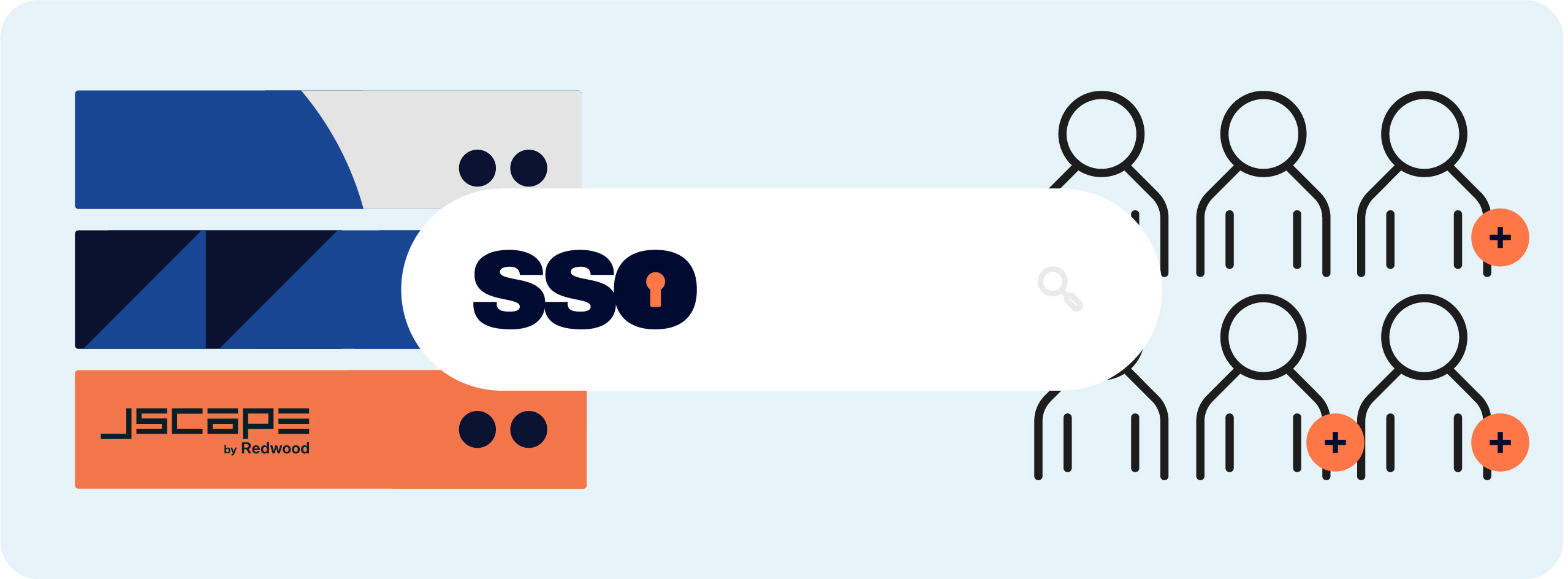What is Single Sign-On (SSO)?
Single Sign-On (SSO) is an authentication method that makes life easier for users and administrators by allowing access to multiple applications and services with just one set of login credentials. A typical SSO implementation allows users to access everything they need—whether it’s directories, applications, or systems within their network—without having to log in repeatedly or perform multi-factor authentication of mfa.
The SSO process follows these steps:
- A client attempts to access an SSO-enabled service
- The client’s login credentials are sent to a centralized Identity Provider (IDP)
- Upon verification of successful authentication, the IDP generates a token and transmits that token to the client’s requested service
- The client is logged into the service
- When the client attempts to access other services, those services will check for the token’s presence and allow access if it exists.
The above process allows your users and processes to move seamlessly between various services and applications with just one set of credentials and can be configured for on-premises, hybrid or SaaS environments.
How does SSO work in file transfer?

By default, your file transfer server will require a login to access its features. The SSO login process can be configured to eliminate that step for either individual users or automated services.
SSO protocols and identity providers in file transfer systems
SSO uses standardized protocols like SAML (Security Assertion Markup Language), OpenID, and OpenID Connect to authenticate file transfer users. These protocols help the file transfer system communicate safely with IDPs like Okta, Google, or Microsoft Entra ID.
The primary difference between SSO protocols is exactly how they authenticate users and handle the communication between the user, the IDP, and the service provider.
When considering an SSO provider for your file transfer environment, you’ll want to think about factors like where your users are coming from (inside or outside of your network), the level of trust you place in federated identity providers, how hardened you need your system to be in case of IDP failure, and so on.
How JSCAPE by Redwood implements SSO for file transfers
JSCAPE MFT Server simplifies this process even further with its URL-based SSO method, which supports the commonly used protocols and allows for smooth integration with various identity providers. The system automatically checks user credentials against trusted providers.
One standout feature of JSCAPE’s SSO is the option to create new user accounts automatically at login. This feature can significantly reduce the time and effort needed for manual account management and make user administration much more efficient.
Why use SSO for file transfers?
Using SSO in file transfer environments provides several noteworthy benefits:
For users: It reduces friction at the login page and makes daily tasks smoother, especially for power users who access many services. It simplifies user identities and user interactions so they don’t have to deal with password resets or password fatigue.
For processes: SSO can reduce risk in automated transfers and enhance compliance tracking with SAML XML certificates.
For Administrators: SSO offers a centralized way to manage user access and permissions, making it easier to enforce strong password policies and keep everything up to date. This centralized control is key to enhancing security by reducing the risks associated with weak or reused passwords.
Additionally, SSO authentication contributes to operational efficiency by simplifying user provisioning and de-provisioning, which reduces the admin workload linked to managing multiple accounts and helps scaling organizations keep up with access to file transfer architecture. With fewer passwords to manage, you’ll also see a drop in password-related issues, cutting down the number of helpdesk tickets and freeing up IT resources for more important tasks.
Weighing the benefits and drawbacks
SSO brings significant advantages to file transfer professionals, streamlining workflows and tightening security. However, balancing these benefits with potential downsides is important, such as reliance on a single vendor.
Depending on third-party providers for SSO can pose risks, such as service disruptions if the provider experiences downtime. Also, integrating SSO with different applications can be complicated, especially in larger or more complex environments. And while SSO does boost overall security, it’s important to remember that a compromised account could potentially open the door to multiple systems.
Overall, however, SSO can be particularly beneficial for improved functionality. SSO will likely become even more central to secure and efficient file transfer operations. However, its implementation should be carefully planned, keeping an organization’s specific needs and risk tolerance in mind.
The future of SSO
As we think about the future of SSO, here are a few questions to consider:
How could emerging technologies and decentralized identity systems change the landscape for SSO in file transfers?
How can organizations balance SSO’s convenience with the need for more granular access controls, especially in sensitive scenarios?
As SSO continues to spread, how might security strategies need to evolve to handle the increased risks associated with compromised credentials?
Transform your file transfer processes with JSCAPE’s SSO capabilities! Sign up for a free trial or schedule a demo to see how easy secure file transfers can be.

.png)